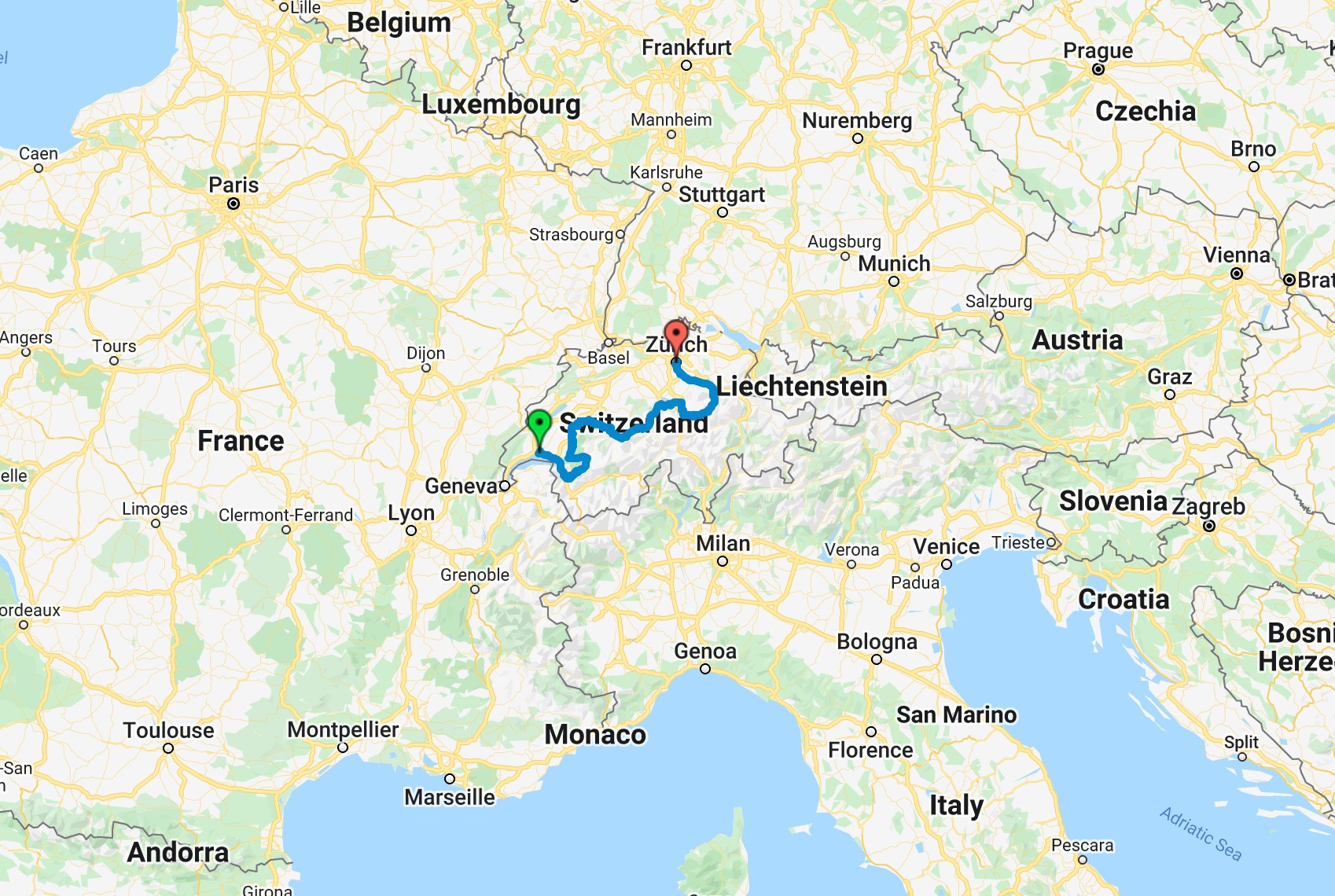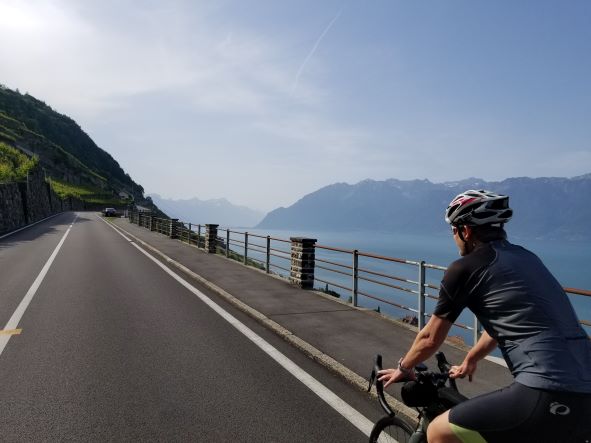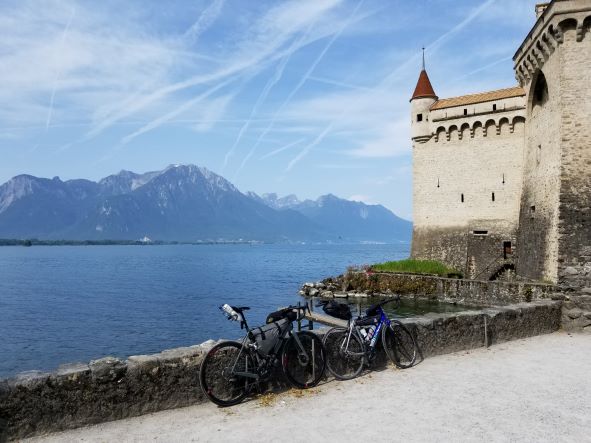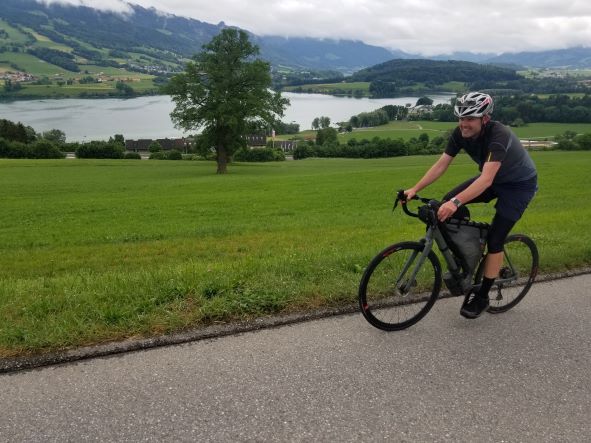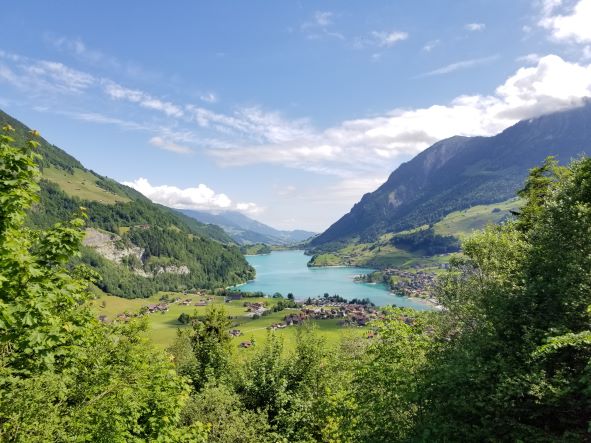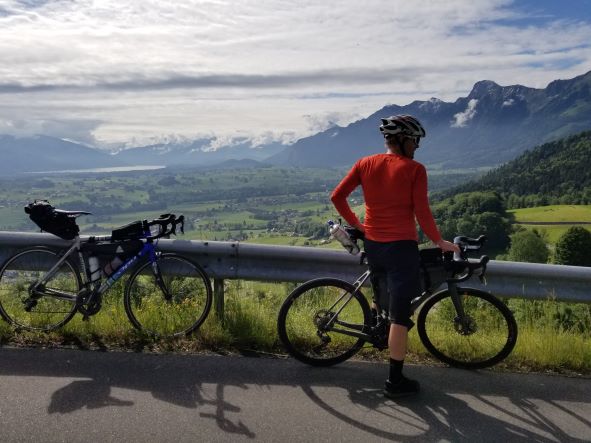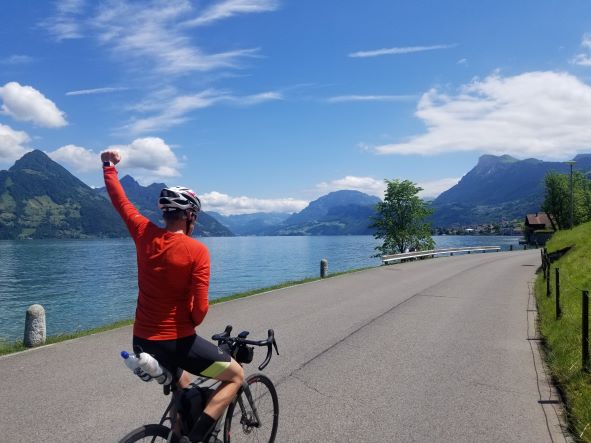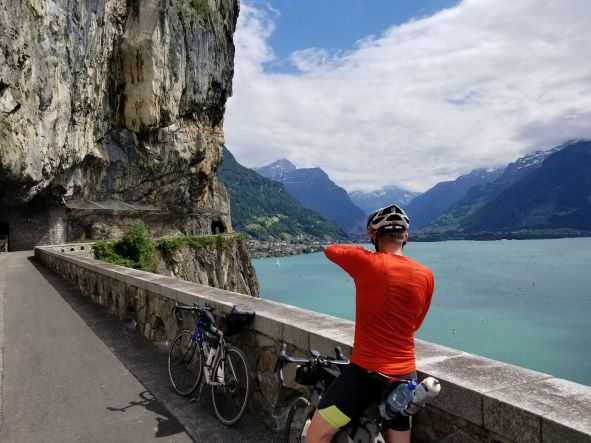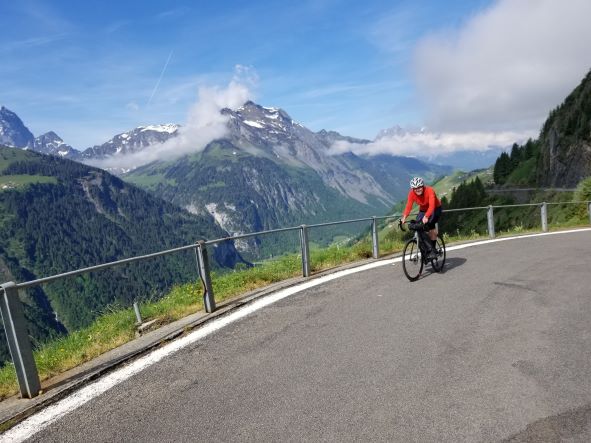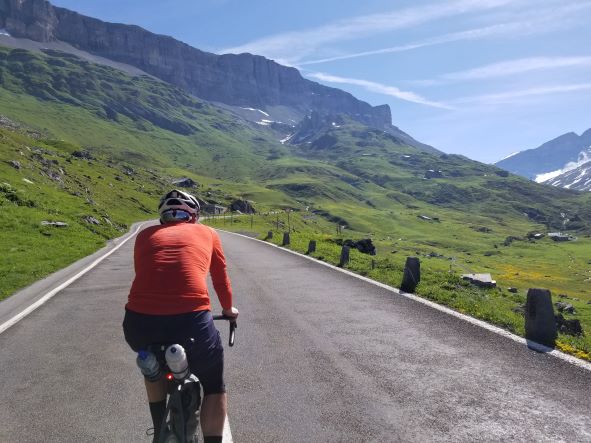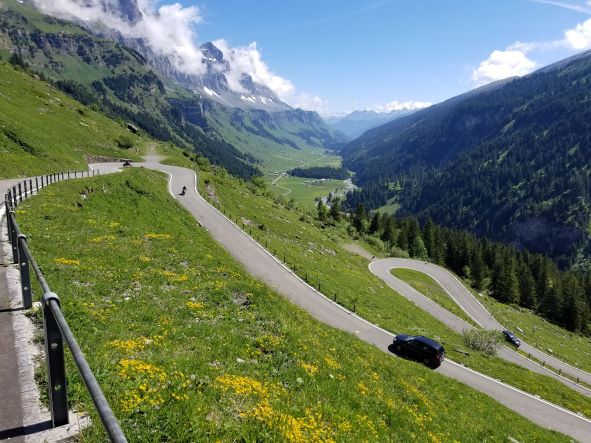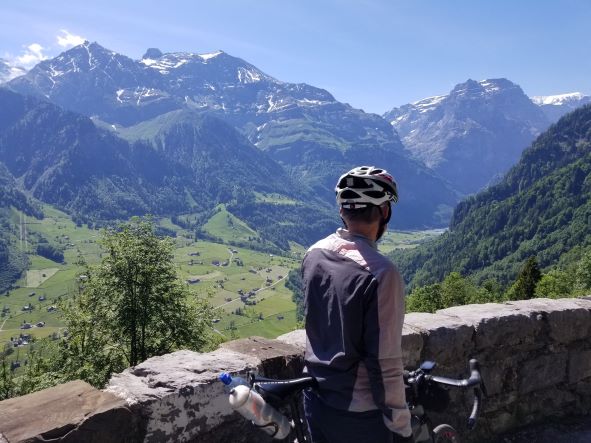In addition to the climbs, highlights included gorgeous lakes: lac Léman (Lake Geneva), lac de la Gruyère, Thunersee, Brienzersee, the spectacular Lungerersee on the descent from Brünigpass, Samersee, riding along the cliffside trail overlooking Vierwaldstättersee (Lake Lucerne), and Obersee; castles: Château de Chillon in Montreux, Château de Gruyères, and Schloss Thun; stopping in the towns of Gstaad, Fribourg, Thun, Interlaken, Brienz; coffee (with cake) stops in cute villages twice a day; and comfortable (and quiet) hotels every night with dinner on a terrasse.
We travelled a combination of quiet secondary roads, farm roads, bike paths, some roads with light to moderate vehicle traffic, and one gravel path. Swiss drivers are very respectful of cyclists, and our route always felt safe. The entire ride was in the Alps, with constant views of peaks and alpine lakes.
Stage 9 of the 2022 Tour de France includes many roads we cycled on Days 1 and 2 between Lausanne and Bulle, over Col de la Croix and through Les Diablerets.
I had difficulty sleeping, getting only one or two hours of sleep on many nights. We had initially planned to cycle for seven days, but ended early as a result. We had intended to continue to the end of Route 4 in St. Margrethen and return west to Basel along the Rhine river on Route 2.
total elevation gain: 6737 m
total time cycling: 24 hours, 51 minutes (over 5 days)
average speed: 21 km/h
elevation gain: 1448 m
time cycling: 4 hours, 45 minutes
Strava (to the ferry)
Strava (from the ferry)
In the morning we had called to reserve a hotel in Flüelen. Upon arriving in the early afternoon, we decided to continue further, and called ahead to reserve a room at the Alpina hotel, a 600 m climb up to the town of Unterschächen. In addition to providing enjoyable cycling for the latter half of our afternoon, this allowed us to climb the first 600 m of the 1600 m climb to Klausenpass (1948 m). The hotel was perfect, with a nice quiet room on an upper floor overlooking the mountains. Unterschächen is a cute small Swiss alpine village. We walked to a small cluster of homes by pastures, visited the church, and had dinner at the hotel restaurant on the terrasse.
Klausenpass (1948 m) was another highlight of the trip. We'd both expected it to be more challenging, and we found ourselves at the summit less than 90 minutes after leaving the hotel. It was a sunny day, and the views were stunning on the entire climb. We stopped for a Coke at the top, before a spectacular descent through twisting switchbacks down the northeast side.
Reid swam in the Limmat river before taking the train back to Lausanne. I took the train to the airport. After retrieving my luggage from the airport hotel, I packed my bike in my hotel room, showered, checked in to my flight, ate dinner in the airport food court, and visited Flughafenpark (a park on a hilltop at the centre of the Zürich airport) before managing to get a few hours of sleep ahead of my flight the next morning.
I purchased a SIM card at the Zürich airport shortly after my arrival for 20 CHF with unlimited calls, texts, and data within Switzerland.
I brought a bike lock, but used it only a few times (e.g., on trains and in one hotel where we left our bikes in a ski storage room overnight). The lock fits in my jersey pocket and is light (175 g). It's not as secure as a u-lock, but provides a good compromise in terms of balancing weight against preventing someone from easily running off with the bike.
My equipment was similar to what I used in 2018, but in addition to my Revelate Designs seat bag and cockpit bag, I added an Axiom frame bag to carry a warmer long-sleeve cycling jersey, neoprene gloves, a headband, shoe covers (extra layers because we were cycling at elevation in May, all of which I wore) and a pack of disposable masks (because it's 2022). I usually ride in SPD-SL road cleats, but for overnight touring I often use mountain SPD clips, since walking in them is easier (except in 2018, when I cycled in SPD-SL road cleats). I lost one of my flip flops on our descent from Col de la Croix into Les Diablerets on Day 1, so I was glad to have cycling shoes that permitted walking.
I bought an 11-34 cassette for this trip (instead of using my 11-28 flatlander cassette). This required a Wolf Tooth Roadlink derailleur hanger extension to accommodate the larger sprockets. I appreciated the lower gears on climbs (which I didn't have in France in 2019/2020).
